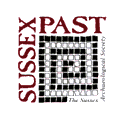Sussex Archaeological Collections: Relating to the history and antiquities of the counties of East and West Sussex
Sussex Archaeological Society, 2000. (updated 2022) https://doi.org/10.5284/1000334. How to cite using this DOI
Data copyright © Sussex Archaeological Society unless otherwise stated
This work is licensed under the ADS Terms of Use and Access.
Primary contact
Jaime
Kaminski
Sussex Archaeological Society
Barbican House
169 High Street
Lewes
BN8 1YE
Resource identifiers
- ADS Collection: 285
- DOI:https://doi.org/10.5284/1000334
- How to cite using this DOI
Foxed by Fox Hall
by Rosemary Baird
This article seeks to establish the origins of two early-18th-century buildings in the village of Charlton, West Sussex. These are the 'Great Room' or 'Dome' (the first Fox Hall), which no longer stands, and the Duke of Richmond's hunting-lodge (the second Fox Hall), which survives.
The paper is a development on a short article published in Country Life on 17 January 2002. That article sought to place the hunting-lodge in context, and to attribute it to the architect Roger Morris. The article presented here additionally surveys all known details of the Great Room, or first Fox Hall, an early exercise by the great scholar-patron Richard Boyle, 3rd Earl of Burlington. It also investigates the question of its location. Both buildings are looked at within the context of the early history of hunting, of the patronage of the first two Dukes of Richmond, and of the Palladian movement in architecture.
Use is made of the unpublished notes prepared by the late Charlotte Haslam for the Landmark Trust, together with a fresh look at maps in the West Sussex Record Office, some of which have been redated. This article thus draws together all previous discussion about the two buildings, combining with new information to give the fullest history possible, and the first clear picture of how the two buildings related to each other.





